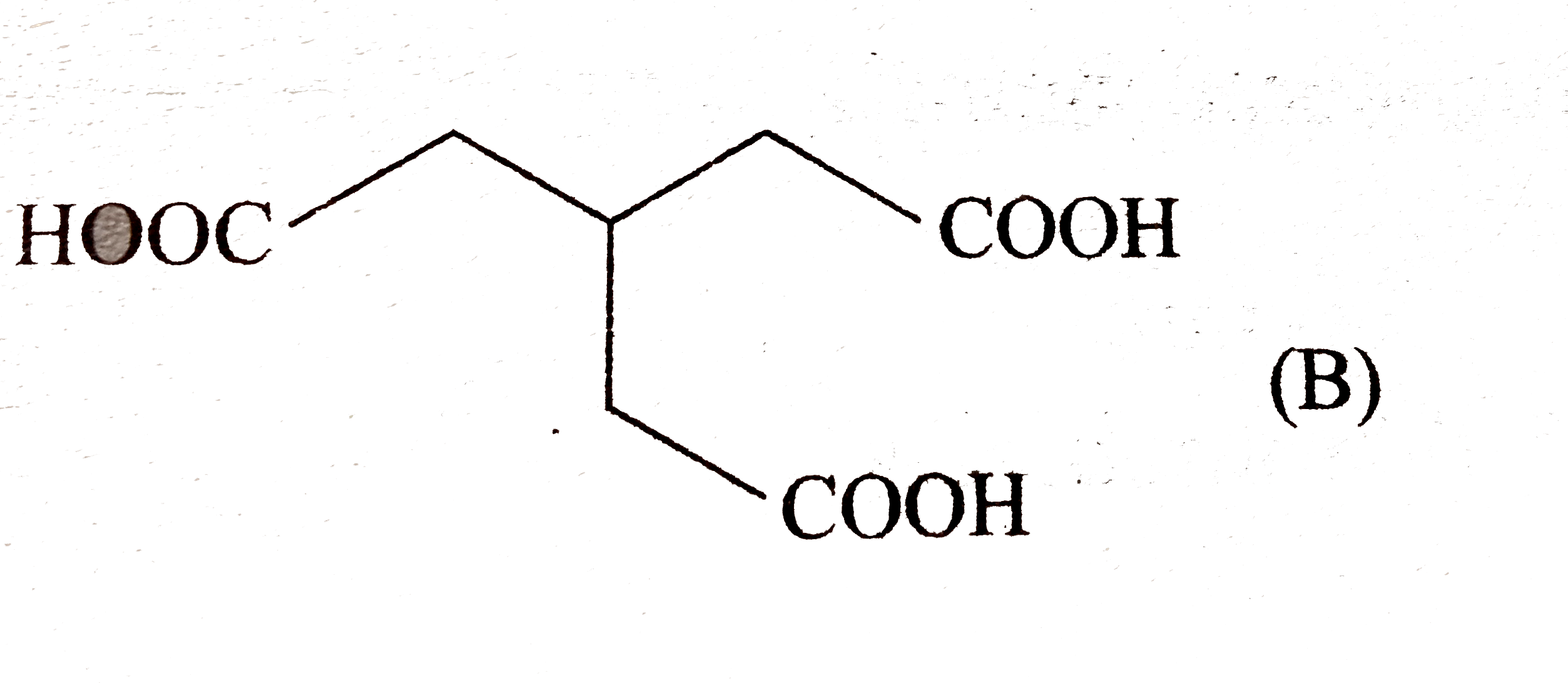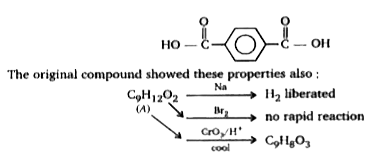Deduce the structural formula of compounds (A) and (B) on the basis of the following data:
When refluxed with sodium and ether, (A) gives n-octane, whereas (B) yields 3, 4-dimethylhexane.
To deduce the structural formulas of compounds (A) and (B), we will analyze the information given about their reactions with sodium and ether.
Step 1: Understand the Reaction
When alkyl halides are refluxed with sodium in the presence of dry ether, they undergo a reaction known as the Wurtz reaction. This reaction typically leads to the formation of alkanes by coupling two alkyl groups and eliminating sodium halide.
Step 2: Analyze Compound (A)
We know that compound (A) yields n-octane when refluxed with sodium and ether. This indicates that (A) must be an alkyl halide that can produce octane through the coupling of two butyl groups.
- The structural formula for n-octane is:
CH3(CH2)6CH3
To produce n-octane, we can deduce that compound (A) is likely to be n-butyl chloride (1-chlorobutane), which has the structural formula:
CH3CH2CH2CH2Cl
Step 3: Analyze Compound (B)
Next, we know that compound (B) yields 3,4-dimethylhexane upon the same reaction conditions.
- The structural formula for 3,4-dimethylhexane is:
CH3CH(CH3)CH(CH3)CH2CH3
To produce 3,4-dimethylhexane, compound (B) must be an alkyl halide that can couple to form this branched alkane. The most likely candidate is 2-chlorobutane, which has the structural formula:
CH3CH(Cl)CH2CH3
Conclusion
Based on the analysis:
- Compound (A) is n-butyl chloride (1-chlorobutane):
CH3CH2CH2CH2Cl
- Compound (B) is 2-chlorobutane:
CH3CH(Cl)CH2CH3
When alkyl halides are refluxed with sodium in the presence of dry ether, they undergo a reaction known as the Wurtz reaction. This reaction typically leads to the formation of alkanes by coupling two alkyl groups and eliminating sodium halide.
We know that compound (A) yields n-octane when refluxed with sodium and ether. This indicates that (A) must be an alkyl halide that can produce octane through the coupling of two butyl groups.
CH3(CH2)6CH3
CH3CH2CH2CH2Cl
Next, we know that compound (B) yields 3,4-dimethylhexane upon the same reaction conditions.
CH3CH(CH3)CH(CH3)CH2CH3
CH3CH(Cl)CH2CH3
Based on the analysis:
- Compound (A) is n-butyl chloride (1-chlorobutane):
CH3CH2CH2CH2Cl
- Compound (B) is 2-chlorobutane:
CH3CH(Cl)CH2CH3
Topper's Solved these Questions
Similar Questions
Deduce the structural formula of compounds (A) and (B) on the basis of the following data:
Both (A) and (B) yield n-butane on reduction with Zn-Cu couple
View SolutionDeduct the structural formul of a compound (A)(C10H16) the gives (B) as the only compound on oxidation with acidic KMnO4.

View Solution
Knowledge Check
An optically active alcohol of formula C9H12O2 produced the following compound when refluxed with KMnO4

What is structure of (A) ?A B
B C
C Dboth (a ) and (b)
Dboth (a ) and (b)
Give the structural formula of the following compounds:
3-Methyl-4-nitrophenol.
View SolutionWrite the structural and graphic formulae of the compounds having the following molecular formulae.
C3H4
View SolutionGive the lewis structures and the formulae of the ionic compound formed by the combination of the following pairs of elements :
Mg ,N
View SolutionDraw the structural formulae of molecules of following compounds :
(i)BrF3 and (ii)XeF4
View SolutionDraw the structural formulae of molecules of following compounds :
(i)BrF3 and (ii)XeF4
View SolutionDraw the structural formulae of molecules of following compounds :
(i)BrF3 and (ii)XeOF4
View SolutionFive isomeric p-subsituted aromatic compounds (A) to (E ) with molecular formula C8H8O2 are given for identifyication. Based on the following observation, give the structures of the compounds.
i. Both (A) and (B) form a silver mirror with Tollens reagent, (B) also gives a positive test with neutral FeCl3 solution.
ii. (C ) gives positive iodoform test.
iii. (D) is readily extracted in aqueous NaHCO3 solution.
iv. (E ) on acid hydrolysis gives 1,4-dihydroxy benzene.
Compound (A) is:
View Solution
